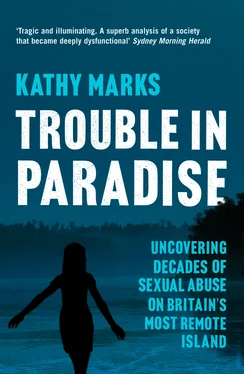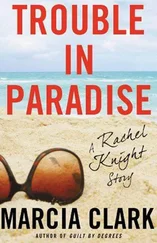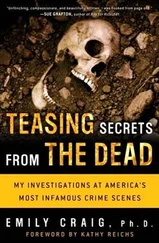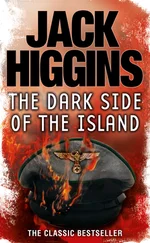We had not, though, been offered so much as a glass of water. It was a hot afternoon, and my tongue was sticking to the roof of my mouth. After a few more photographs, the six of us left. We would never set foot inside Steve Christian’s house again. And some of those women would never again speak to us, or even acknowledge our existence.
The next day, two of those who had remained in the background invited us to talk to them privately. They did not wish their names to be used, and we met them on neutral ground; even so, the other islanders knew within hours that the interview had taken place.
The two were anxious to dispel the impression that Pitcairn was a hotbed of under-age sex. That had not been their experience when they were growing up, they claimed. I asked why they had kept quiet at Big Fence. ‘There’s no point in one little voice speaking up,’ one woman replied. She told us that the Pitcairners usually avoided confrontation. ‘If you’re opposed to something, you tend to defer. We all have to get along together. We’re a community. None of us can survive here on our own.’
The pair were already unpopular because they had not condemned the prosecution outright. One observed, ‘If you try to give a balanced view, you’re regarded as disloyal.’ The other had been called a ‘Pommy supporter’ and ‘puppet of the Governor’ while going about her business in the Adamstown square.
The women believed that the sexual abuse had to be stopped. ‘If it’s as bad as it’s been made out to be, then it needed to be addressed,’ said one. She added, ‘But I’m not condemning the guys. I don’t personally want to see them jailed. I feel very sorry for the guys. Yet we’re hurting for the girls. It’s a double-edged sword. We’re all related. We’re related to the victims. We’re related to the offenders. And whatever decision is made, it’s going to hurt everybody. The ripples are so widespread.’
One woman alluded to victims within her own family, and said that she admired the courage of those giving evidence. However, she went on, ‘I don’t know who’s done what to whom, and I don’t really want to know, because then I’ll have to live with that for the rest of my life. You go to bed at night, you can’t sleep for thinking about it. No one wants to take that on board.’
This off-the-record conversation, I remember, left me feeling like Alice in Wonderland. The women at Big Fence had promised us the real story. The two dissidents had given us another perspective. But theirs, too, was clouded by ambiguity.
Walking home, as we passed little groups of people chatting in the road, I was struck by a sense of life unfolding in parallel universes. On the surface, the island seemed innocuous, even banal. Then every so often you glimpsed something hard-edged and sinister. Which was the real Pitcairn?
CHAPTER 3 Opening a right can of worms
While exploring my surroundings in those early days before the trials began, I poked my head into the public hall, which doubled as Pitcairn’s courthouse. A familiar figure gazed back at me: Queen Elizabeth II, in a hat and pearls, clasping a bunch of flowers. There were, in all, three photographs of the Queen at the front of the hall, as well as one of the Duke of Edinburgh and one of the royal couple. On the same wall hung a Union Jack, together with a Pitcairn flag and a British coat of arms.
It was an overt display of patriotism of a kind rarely seen nowadays, and it was in striking contrast to the anti-British sentiments expressed at Big Fence, where most of the women seemed to agree with Tania Christian, Steve’s daughter, when she declared that ‘Britain can go to hell as far as I care.’
The reality was that, until Operation Unique started, barely a subversive murmur was heard around Adamstown. Pitcairn was Britain’s last remaining territory in the South Pacific, and its inhabitants were—as visitors often remarked—among Her Majesty’s most loyal subjects. Until not so long ago, ‘God Save the Queen’ was sung at public meetings, school concerts, even the twice-weekly film shows, while the British flag was flown on the slightest pretext. A number of islanders were MBEs, and several, including Steve Christian, Jay Warren and Brian Young, one of the ‘off-island’ accused, had been invited to Buckingham Palace.
Pitcairn’s origins were emphatically anti-British, of course; in Fletcher Christian’s day, there were few acts more heinous than mutiny. So it was an ironic twist when, a couple of decades later, the British Navy became the islanders’ guardian and lifeline. The captains of British warships that patrolled the South Seas in the 19th century, keeping an eye on that corner of Empire, felt responsible for the minuscule territory. They developed a sentimental attachment to the place and stopped there regularly, delivering gifts and supplies. They also found themselves settling disputes and dispensing justice in the fledgling community.
Russell Elliott, the commander of HMS Fly , who visited in 1838 after a difficult decade for the islanders, is recalled with particular fondness. Following John Adams’ death in 1829, the Pitcairners had emigrated to Tahiti, where many of them died of unfamiliar diseases. The rest, after limping home, spent five years under the despotic rule of an English adventurer, Joshua Hill, who convinced them that he had been sent out from Britain to govern them. When Hill left, they were then terrorised by American whalers, who threatened to rape the women and taunted the locals for having ‘no laws, no authority, no country’. Demoralised, the islanders begged Elliott to place them under the protection of the British flag, and he agreed, drawing up a legal code and constitution that gave women the vote for possibly the first time anywhere.
Pitcairn was now British, although for the next 60 years its only connection with the mother country was to be the visiting navy ships. In 1856, concerned about overpopulation, the islanders decamped again, this time to the former British penal colony of Norfolk Island; however, a few families returned, and the population—the origin of the modern community—climbed back to pre-Norfolk levels. Then in 1898 Pitcairn was taken under the wing of the Western Pacific High Commission, based in Fiji, which oversaw British colonies in the region. The WPHC did not trouble itself greatly with its newest acquisition: during a half-century of administrative control, only one High Commissioner visited—Sir Cecil Rodwell, who turned up unannounced in 1929.
In the meantime, the warships stopped calling, although the vacuum was partly filled, following the opening of the Panama Canal, by passenger liners. The captains and pursers of the merchant fleet took over the Royal Navy’s paternal role, ordering provisions for the islanders, carrying goods and passengers for free, and donating items from their own stores.
With the liners came emigration, and intermarriage with New Zealanders. While strong ties were forged between Pitcairn and New Zealand, the relationship with Britain remained fundamental, and one of the colony’s proudest hours came in 1971, when the Duke of Edinburgh and Lord Mountbatten arrived on the Royal Yacht Britannia and were transported to shore in a longboat flying the Union Jack from its midships. Official visits, to the disappointment of the locals, continued to be fleeting and infrequent, though.
There were, obviously, practical obstacles hindering more effective colonial scrutiny. Pitcairn, 3350 miles from Fiji, was hard to get to and even harder to get away from. In order to visit for 11 days in 1944, Harry Maude, a Fiji-based British official, had to be away from home for nearly six months. Communications were also primitive. Until 1985 the only way to contact the island was to send a radio telegram by Morse code.
Читать дальше












